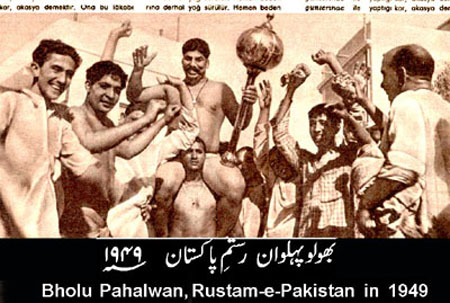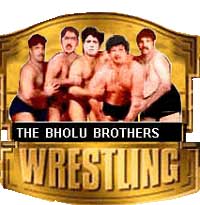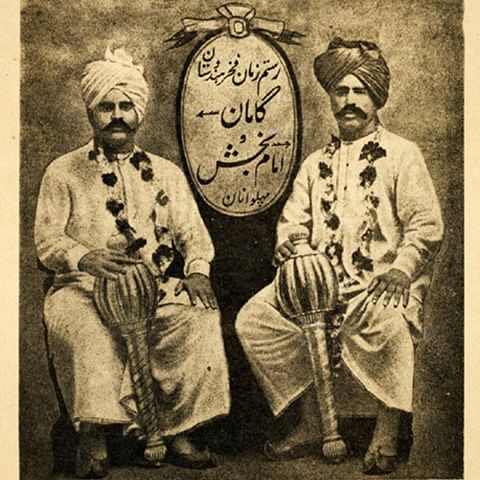Wrestling Arenas Await Revival

In Lahore’s past, wrestling wasn’t just a sport—it was a way of life. A book I read perfectly captures this spirit: “Stories of Lahore’s wrestlers were endless. Until three decades ago, people gathered on tharas (platforms) to talk about legendary wrestlers like Afzal Mahni, Phajji Tondia, Bholo Pehalwan, and more. They imagined themselves in Minto Park, watching live Shahi Dangal (royal wrestling competitions).” These accounts stirred something in me—where has this rich culture gone? It’s sad to see wrestling lose its once-great significance in Lahore.
Lahore: The Land of Pehalwans
For centuries, Lahore was known as the land of Pehalwans. Wrestlers from across the subcontinent would come to Lahore to prove themselves in a dangal. Historians say there wasn’t a renowned wrestler who didn’t visit Lahore to compete. Wrestling was part of the city’s soul.
The Thara Culture of Old Lahore
Up until a few decades ago, Pehalwan families practiced the art of wrestling. After closing their businesses, men from the city would gather on tharas, at hammam shops, tea stalls, or parks, to discuss dangal and wrestlers. People had their heroes, and sometimes fierce arguments erupted between Pehalwan supporters. Hammams in Taxali, Bhatti, and Sheranwala Gates were hotspots for these discussions. Early in the morning, locals would watch Pehalwans train in their akharas (wrestling arenas).
The Rituals of Akharas
Every Pehalwan had a Khalifa (leader), who would permit them to enter the akhara by throwing mud on them—a ritual before training. Wrestlers were divided into groups called dafs, and before every dangal, the daf leaders would gather intelligence on their opponents. In Lahore, the build-up to a dangal was a spectacle. Posters and banners of wrestlers plastered the city walls. Locals passionately campaigned for their favorite Pehalwans—sometimes with more zeal than today’s political campaigns.

Shahi Dangal: The Grand Event
The grandest of all competitions was the Shahi Dangal, supported by the government. Other well-known contests included the Poput Dangal, Ghalib Dangal, and Itefaq Dangal. A day before the Shahi Dangal, a procession of people, wrestlers on tongas, and music bands paraded through the streets. Wrestling was a profession of prestige, and anyone called ‘Pehalwan ji’ was held in high regard. Old residents of Lahore believed this culture would never die, but as they passed on, so did the tradition.
Where Did It All Go?
Unfortunately, the younger generation knows little about Lahore’s rich wrestling heritage. There were once twelve akharas inside the city, with the most popular located in Bhatti, Shah Almi, and Sheranwala. Minto Park was home to Lahore’s major wrestling contests before 1947. Wrestlers spent years preparing for these events, yet today, only four akharas remain. Two belong to the Shahiya Pehalwan family, while the other two are located near Lohari Gate. Recently, the Tibbi Thana Arena was shut down due to economic struggles.
A Tough Life for Pehalwans
The life of a Pehalwan wasn’t easy. Wrestlers followed a strict routine—sleeping after Isha prayers and waking up at 3 AM. Those who didn’t adhere to the rules faced tough consequences. Pehalwans consumed 10 liters of sardai, milk, almonds, heavy meat meals, and desi ghee daily to build strength. Only after this rigorous diet were they allowed to train in the akhara. Senior wrestlers discussed faults and tactics to improve performance.
Lahore’s Wrestling Legends
Did you know that some of the world’s greatest wrestlers came from Lahore? Gamma Pehalwan, also known as Rustam-e-Hind and Rustam-e-Jahan, defeated American champion Benjamin Roller in just 1 minute, 40 seconds. He later defeated Zybisko, a Polish champion, in 40 seconds. Jhara Pehalwan famously defeated Hulk Hogan in a 14-hour match. Other legendary wrestlers included Imam Bux, Bholu Pehalwan, and Kala Pehalwan. Today, we rarely see such wrestling fame, but in 2018, Muhammad Inam from Gujranwala won a gold medal at the Commonwealth Games—a beacon of hope for the sport.

A Struggling Legacy
Many old Pehalwans now live in poverty. Khadim Hussain, also known as Ami Pehalwan, was once a celebrated wrestler but now sells juices near Delhi Gate. His grandfather, Natha Pehalwan, once held the title of Rustam-e-Hind, but Khadim was forced to change his profession because wrestling no longer provided a livelihood. He laments that the government ignores wrestling, while in India, wrestlers are still supported and respected.
The Impact of Modern Gyms
Older wrestlers blame the rise of gym culture and food supplements for the decline of traditional wrestling. These modern trends have replaced the authentic wrestling culture that once thrived in Lahore. The Pakistan Wrestling Federation and the government must work together to restore this heritage. Wrestling brought pride to Lahore and was once the heartbeat of the city. It’s time we brought it back to life.
Written by Tania Qureshi
The writer can be reached on twitter.com/TaniaQureshi
